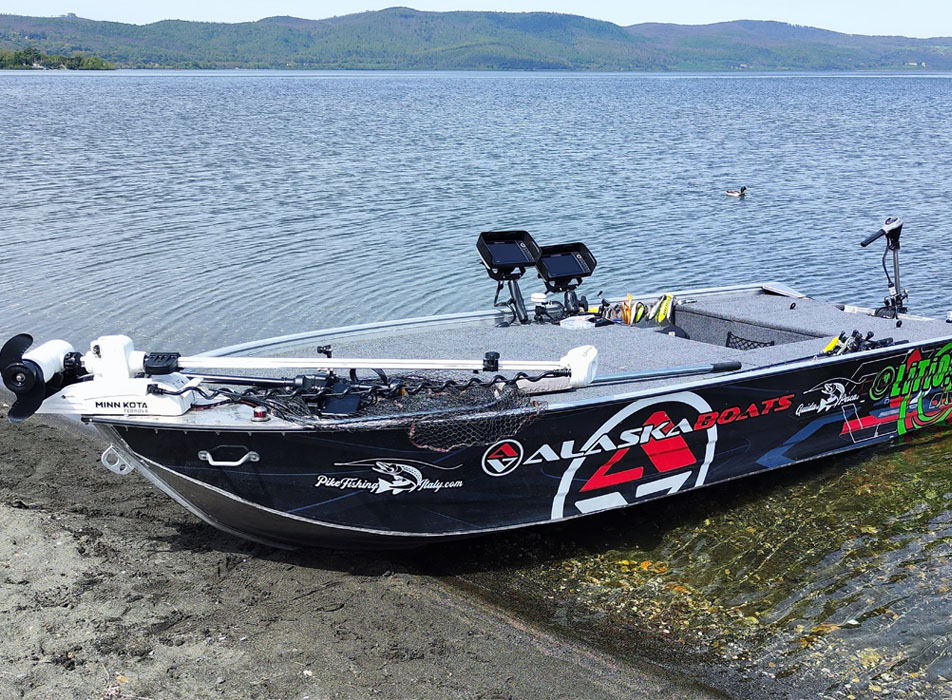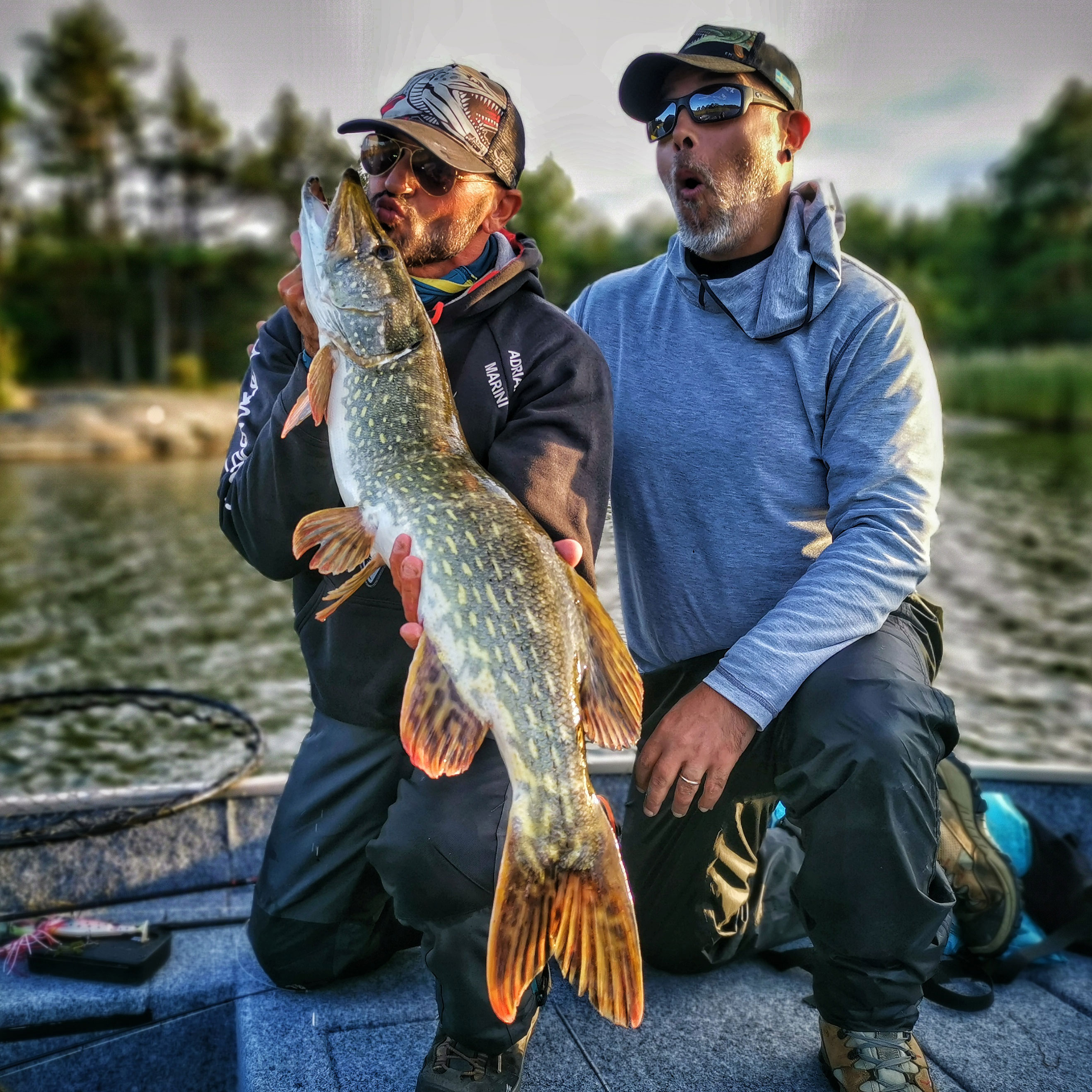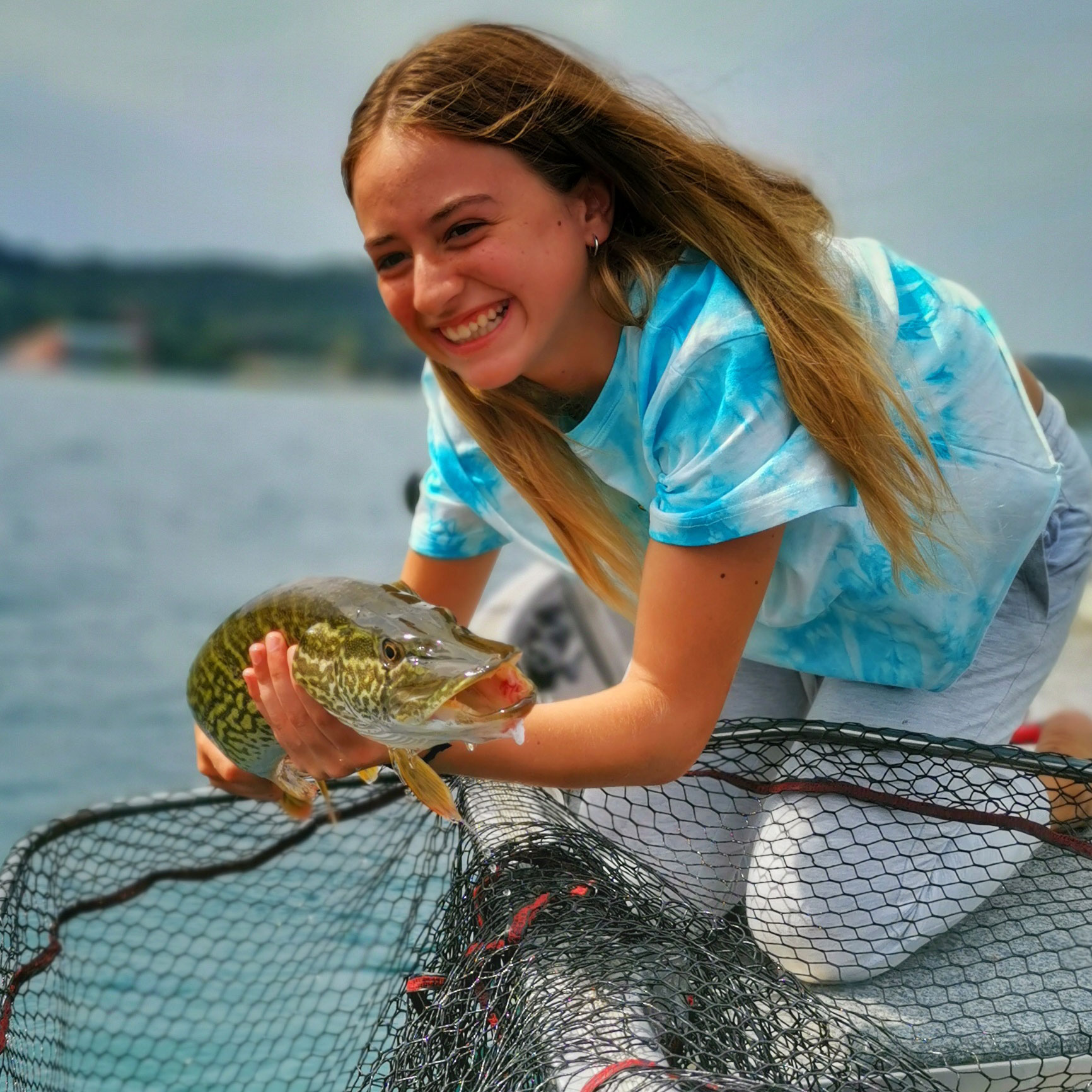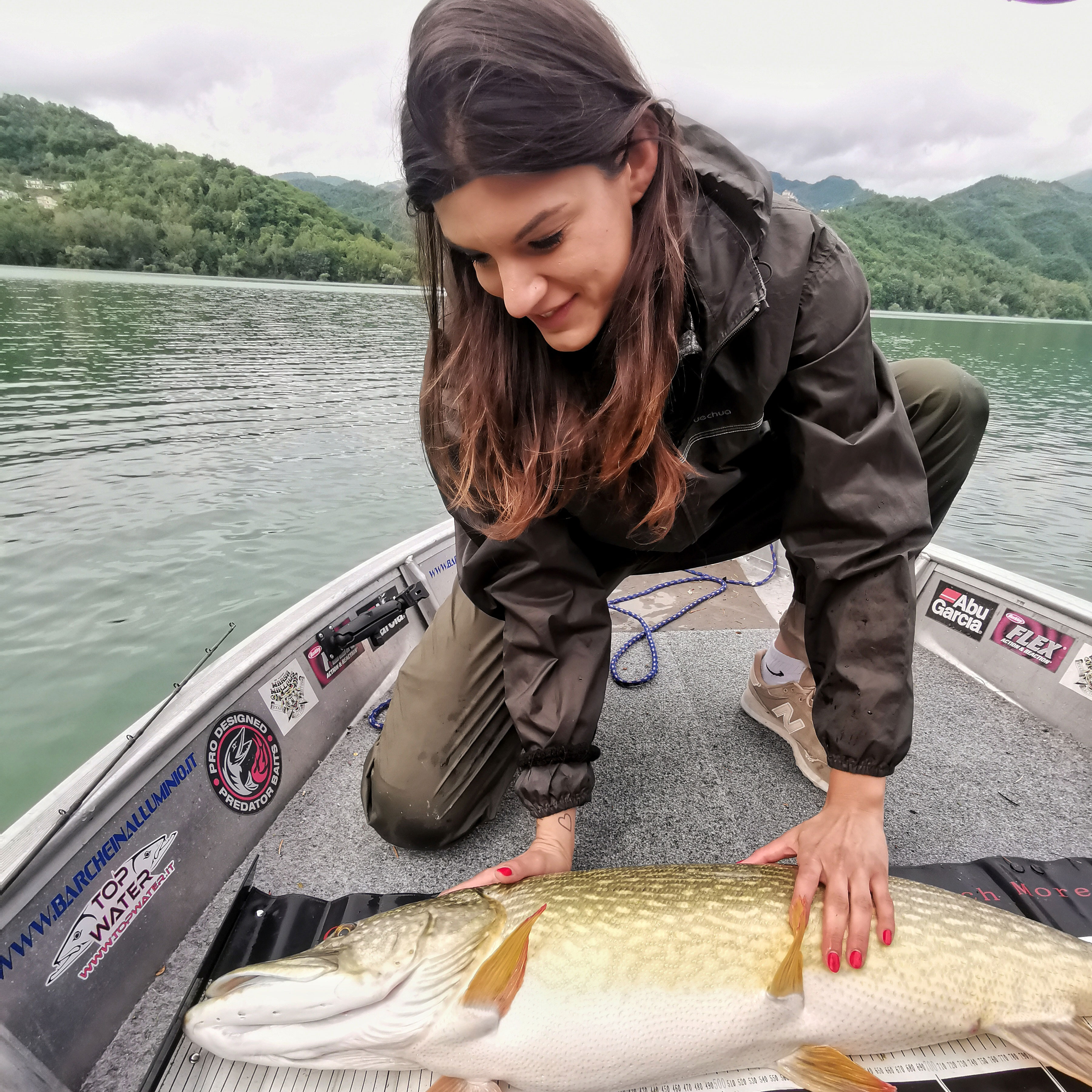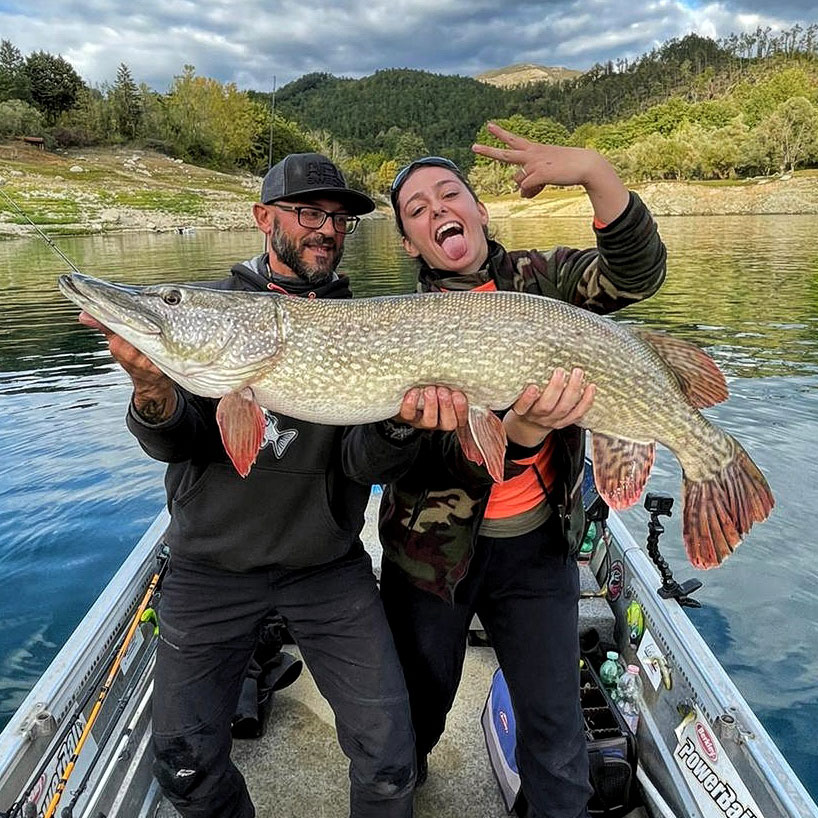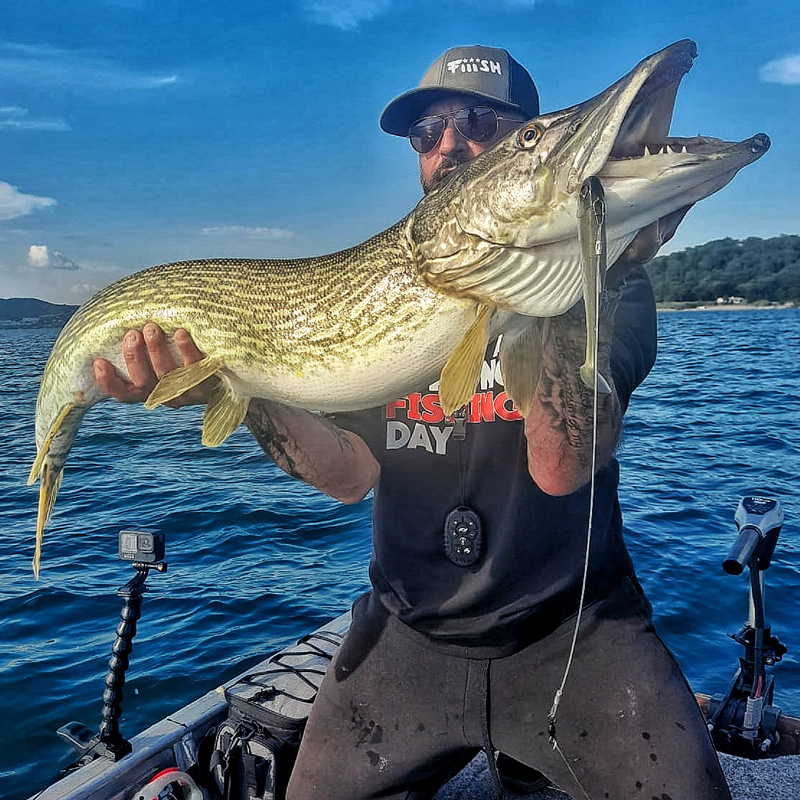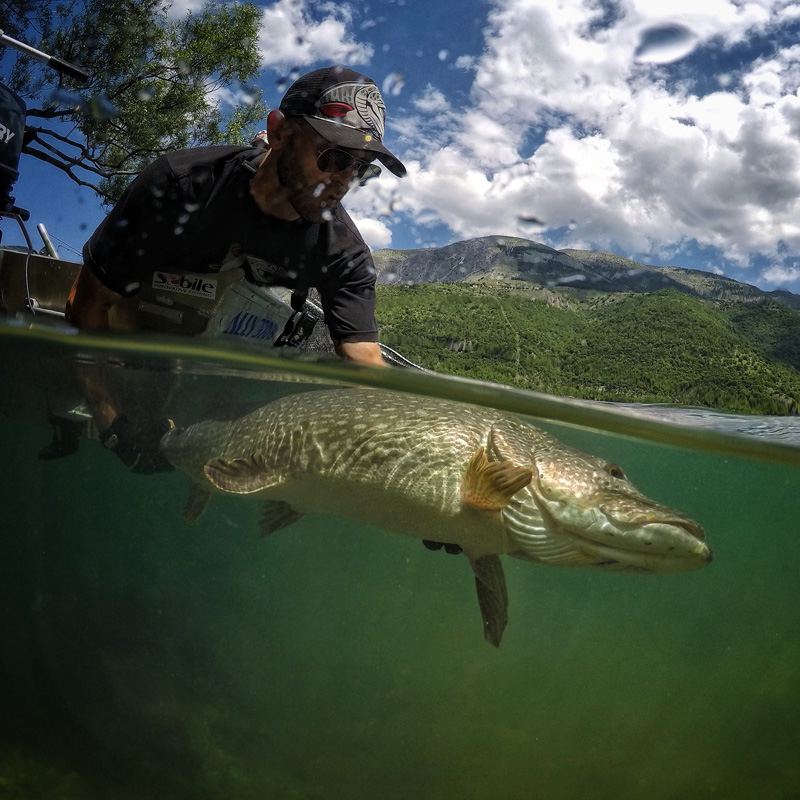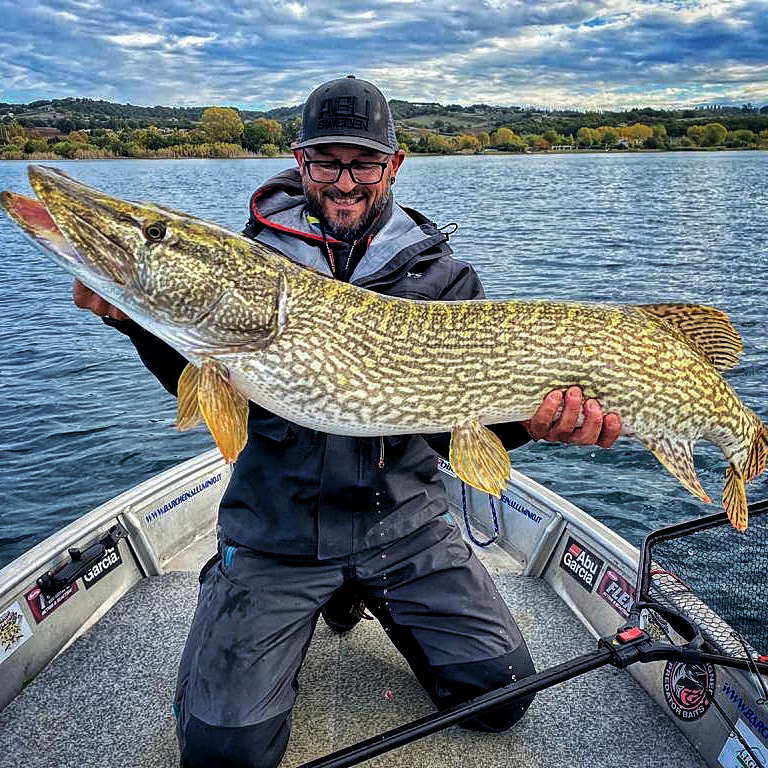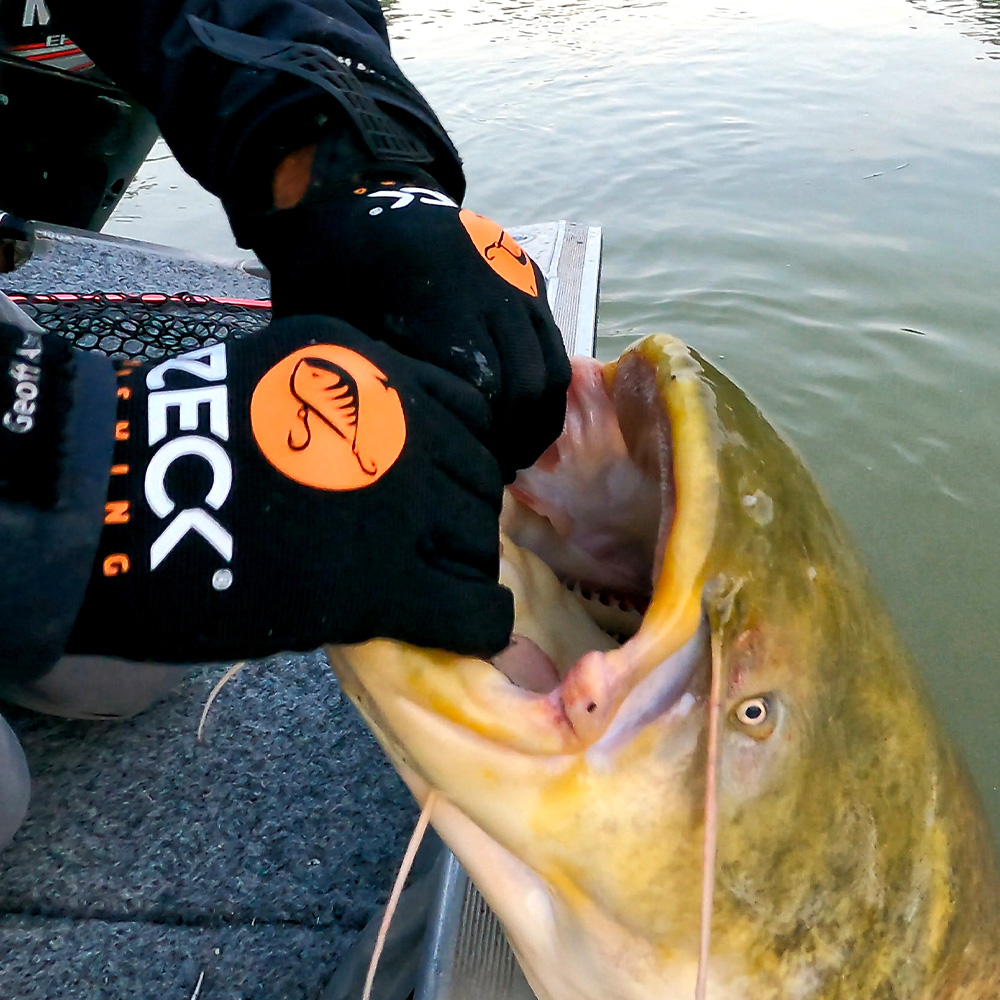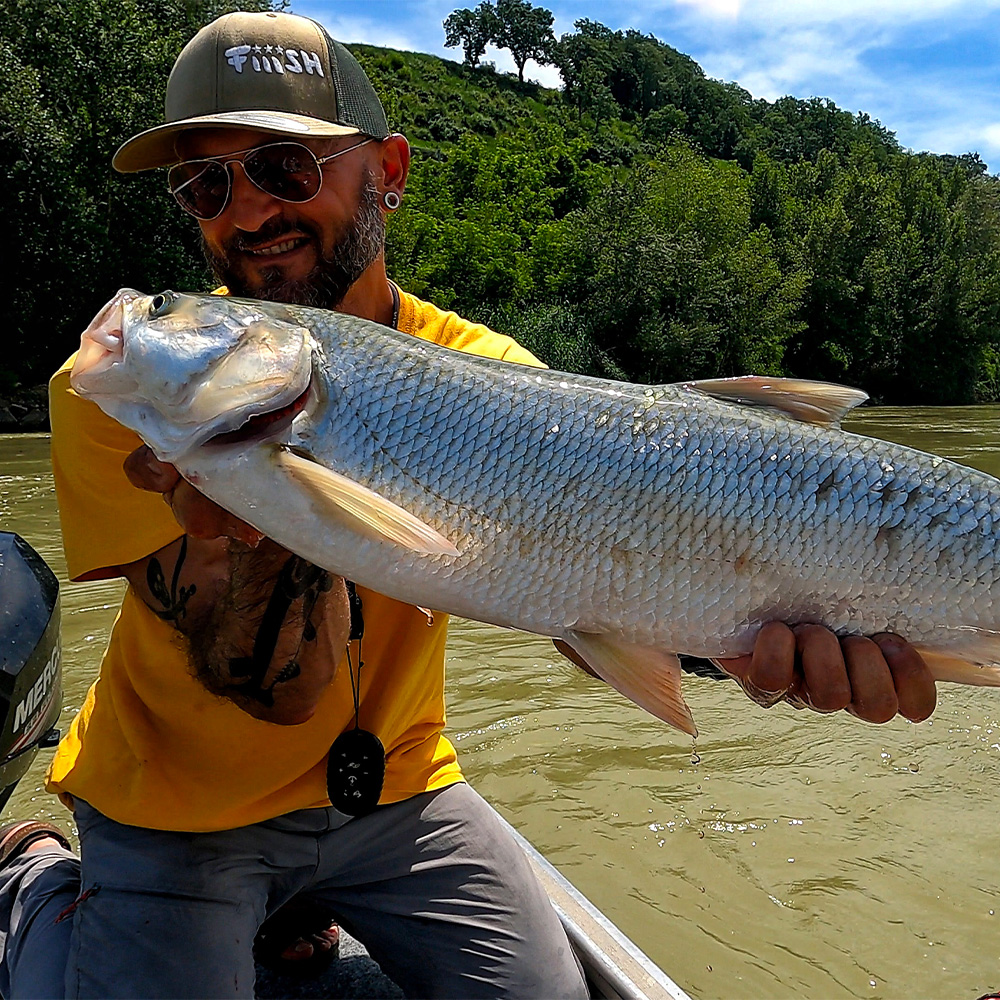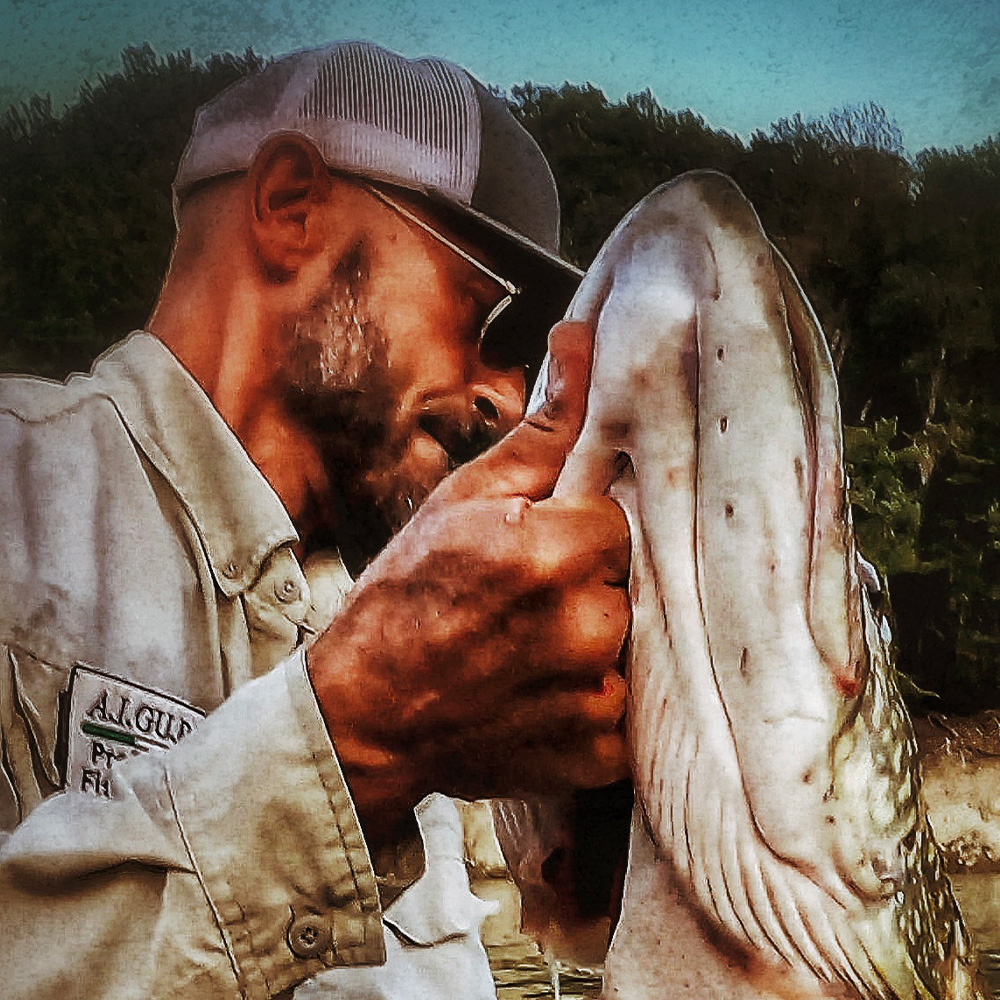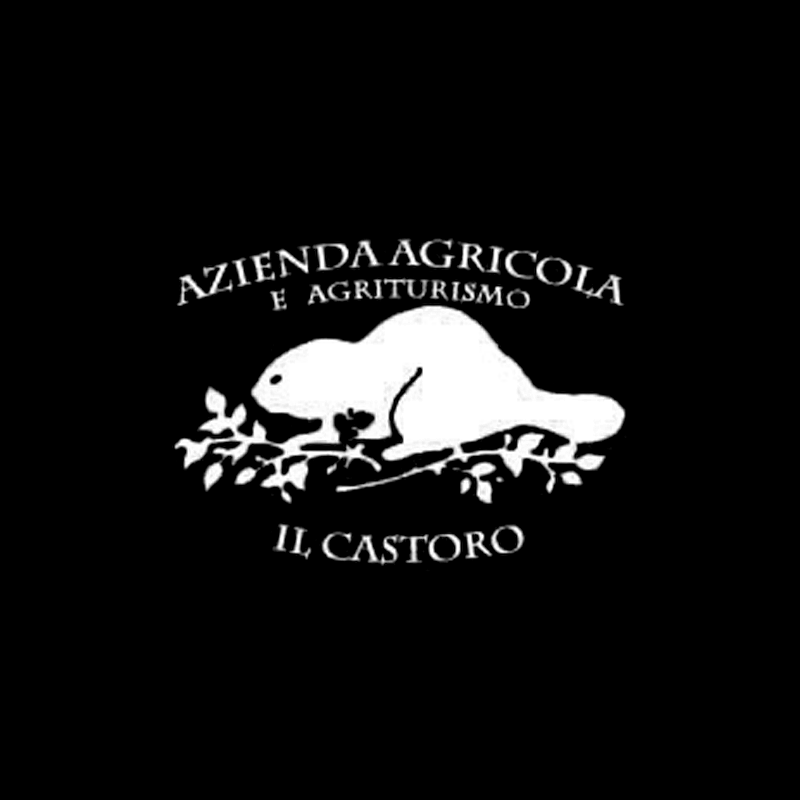
We like to call the pike the KING of freshwater predators. With its pointed snout and prominent lower jaw, the pike is easily identifiable. The imposing head, sharp large teeth, and its massive size are the main features of this "war machine". These peculiarities have always fascinated anglers worldwide. Its scientific name is ESOX LUCIUS, belonging to the ESOCIDAE family, order ESOCIFORMES.
Esociformes are characterized by having a single dorsal fin, a sleek and slender body shape, and its camouflage coloring is like a fingerprint, unique to each fish, and it changes depending on the subspecies, age, and environment in which it lives. It is entirely covered with small cycloid scales, and the dorsal and anal fins are close to the tail, positioned very far back. It is a fish that lives for about 15 years; the female can reach a maximum length of 140 cm (100 cm for males) and exceed 20 kg in weight.
The pike is widespread throughout much of the northern hemisphere and prefers still waters of lakes and slow-moving waters of large rivers in the valley bottom, canals, or backwaters. Its most noticeable characteristic is its large head. It is flat and elongated with a huge mouth equipped with about 700 teeth, some long and straight positioned at the edges of the jaws, and others smaller, hook-shaped, facing inward, positioned throughout the tongue and palate (they serve to prevent the prey from escaping from the mouth). The large and powerful mouth is indispensable for preying on fish, mammals, and reptiles; the large lateral teeth, long and sharp, are also laterally sharp (these are the ones that generally cut our lines). The particular predatory action of the pike means that it performs a natural balancing function of the various species present in its ecosystem. Indeed, this animal tends to prey mainly on old, sick, or injured fish. In the middle of a school of fish, the pike manages to identify and attack those with abnormal, slower, or irregular swimming. This characteristic has the dual effect of saving energy by avoiding chasing healthy and therefore fast fish, and improving the genetic quality of the prey species (by selecting the weakest prey, it ensures that only the strongest and fittest specimens remain and reproduce).
Recent studies identify a native species of pike, called Esox Cisalpinus or Esox Flaviae; consequently, in Italy, there are two species of pike: the Italian pike and the Esox Lucius, an allochthonous import also known as the Northern Pike, i.e., pike from Northern Europe. The Northern Pike is the most widespread pike species in the world, found throughout Europe, Eastern countries, and North America. In many Italian waters populated by the now rare Italian pike, the introduction of the Northern Pike has generated hybrids whose coloring is a mix between the "marbled" pattern of the Italian pike and the semi-circular "spot" pattern of the Northern Pike, creating a wide variety of truly unique patterns.
Adriano Marini
To learn more:
Contacts INFO for THE PIKE - Part 1 - Morphology
LAKES
| Lake Type | Vulcanic | |
| Altitude | 340 feet | |
| Surface | 22 miles2 | |
| Depth | 540 feet | |
| Distance from Rome | 24 miles | |
| Target | Pike, Bass |
| Lake Type | Artificial | |
| Altitude | 1760 feet | |
| Surface | 4 miles2 | |
| Depth | 285 feet | |
| Distance from Rome | 68 miles | |
| Target | Pike, Asp, Perch |
| Lake Type | Artificial | |
| Altitude | 1760 feet | |
| Surface | 2 miles2 | |
| Depth | 220 feet | |
| Distance from Rome | 65 miles | |
| Target | Pike, Asp, Perch |
| Lake Type | Vulcanic | |
| Altitude | 660 feet | |
| Surface | 1 miles2 | |
| Depth | 190 feet | |
| Distance from Rome | 24 miles | |
| Target | Pike, Bass |
| Lake Type | Artificial | |
| Altitude | 1210 feet | |
| Surface | 1 miles2 | |
| Depth | 62 feet | |
| Distance from Rome | 62 miles | |
| Target | Pike |
| Lake Type | Volcanic | |
| Altitude | 1000 feet | |
| Surface | 44 miles2 | |
| Depth | 134 feet | |
| Distance from Rome | 86 miles | |
| Target | Bass, Pike |
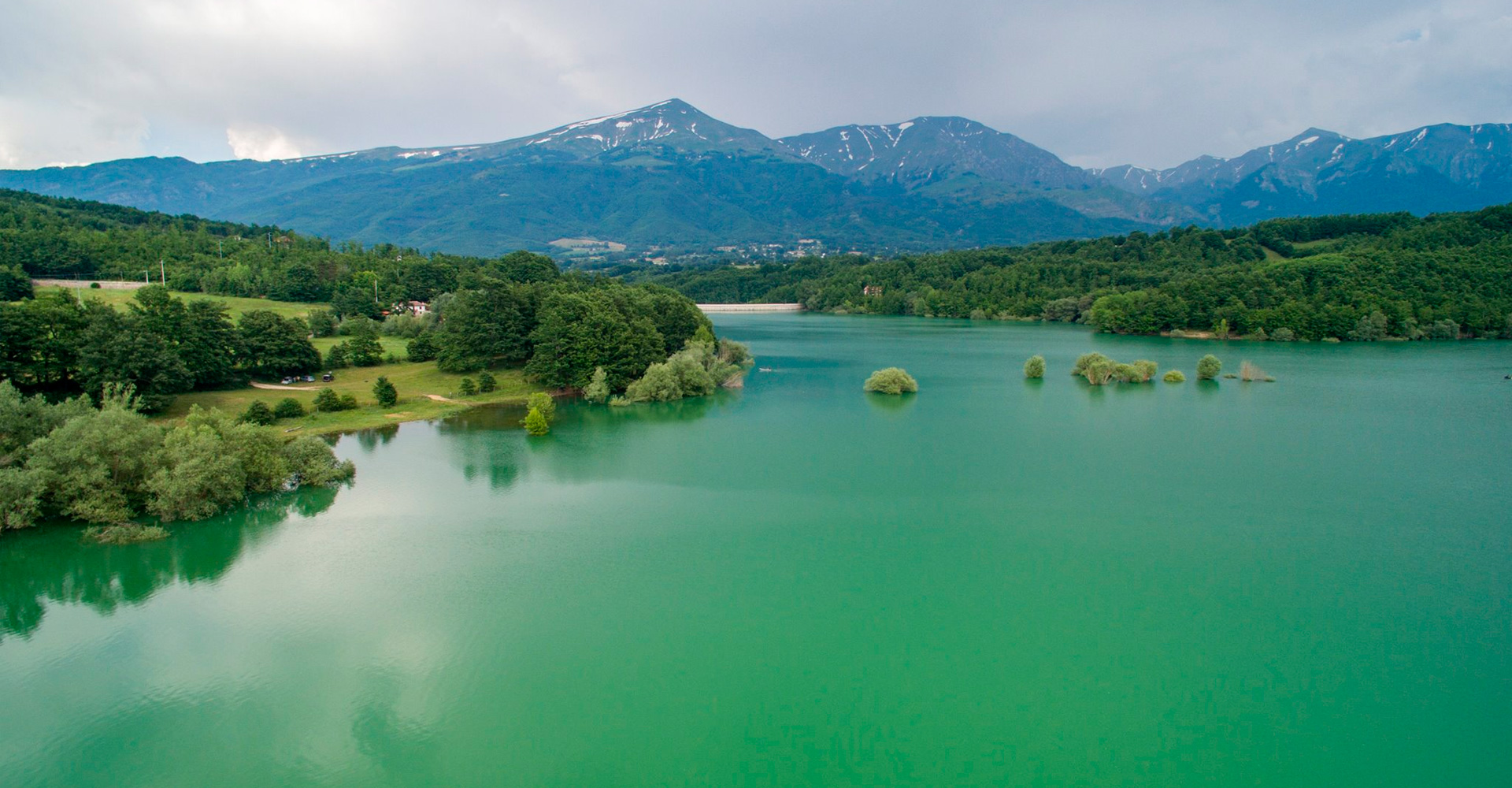
| Lake Type | Artificial | |
| Altitude | 2850 feet | |
| Surface | 1 miles2 | |
| Depth | 134 feet | |
| Distance from Rome | 86 miles | |
| Target | Pike, Perch |

| River | ||
| Altitude | 490 feet | |
| Spot Length | 27 miles | |
| Distance from Rome | 18 miles | |
| Target | Catfish, Asper, Chub |
BOAT
My boat is a 4355 alluminium alaska boat perfectly equipped for fishing, safe and unsinkable.
- Length 14 feet
- Engine 1 Mercury 20 Hp
- Engine 2 Rhino BLX 110 lbs 24 volt
- Bow Engine Minnkota Terrova 80 lbs 24 volt
- Fish Finder GPS 2 x Humminbird Helix MSI+
- Mega Live imaging
- Lithium Battery e 24 volt LitioStore
ADRIANO MARINI
BIO
My name is Adriano Marini and I am a professional AIGUPP fishing guide code ITA0108/21. I started fishing with my father at the age of 8. Through the years I have gained experience, by trying different techniques, to specialize in predators fishing; and I started practicing catch and release from a very young age. Since 2015 I have been a fishing guide with a specialization in pike fishing.
TV Series on Sky pesca TV "Pike Story". I am also a collaborator and editor about pike fishing for these magazines: Pesca spinning, Spinning passione and “Piscor magazine”. In 2015 together with Americo Rocchi we made the documentary: I segreti del luccio 2. My goal is to provide an unforgettable fishing experience: funny, educational and relaxing; always placing priority on nature respect and fish protection.


